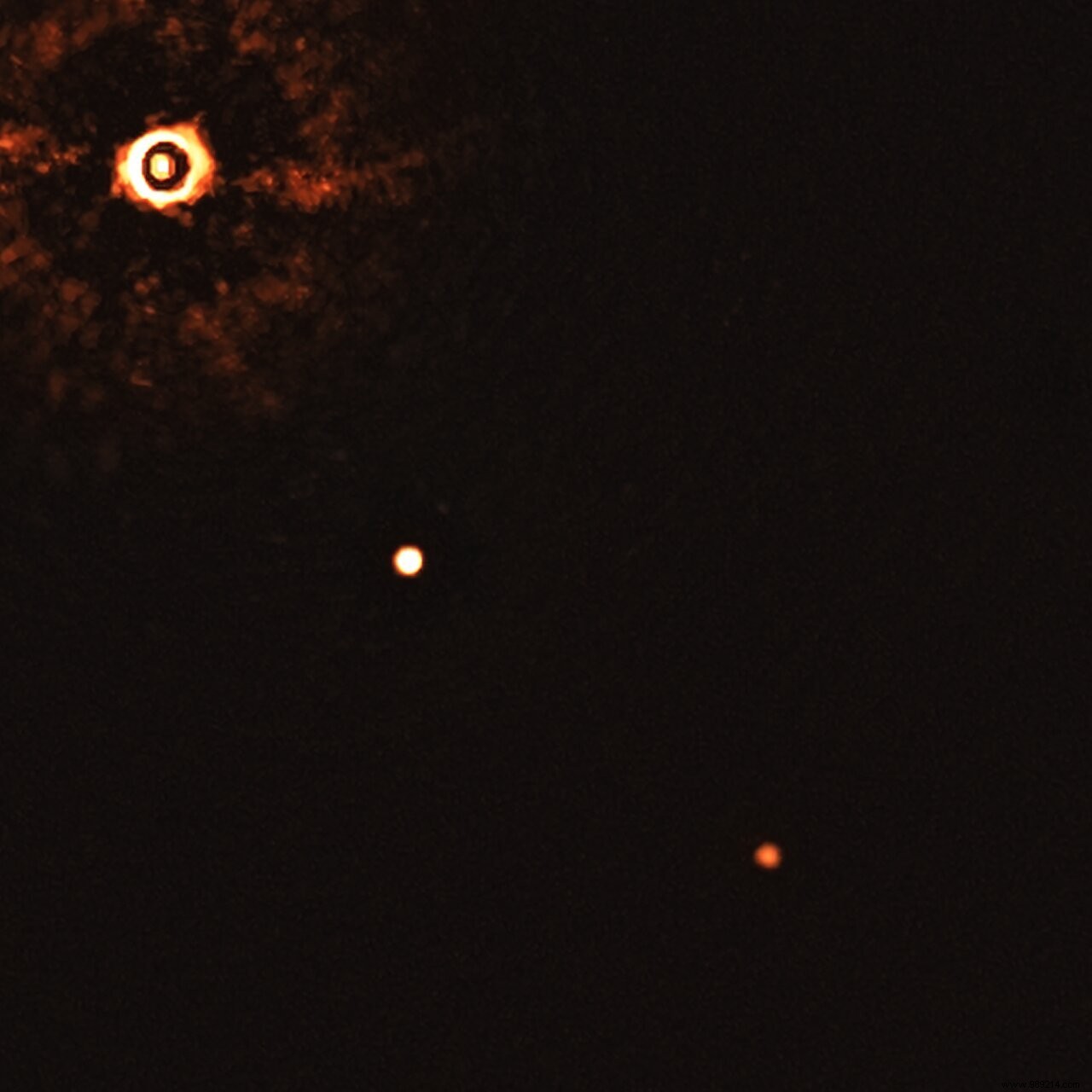The Very Large Telescope (VLT) has just achieved the feat of photographing two planets in orbit around a Sun-like star. This star system is about 300 light years from Earth.
If today there are more than 4,000 worlds in more than 2,800 planetary systems, remember that all these planets have been located by indirect means (transit or radial velocity method). And on this sample, only a few could be imaged directly.
Each new photo is therefore a small event. Recently, astronomers were able to obtain the incredible image of a star system only 300 light years from Earth .
As said above, other images of this type have already been captured. On the other hand, this is the first image revealing several planets in orbit around a star similar to ours .
We owe this feat to the SPHERE instrument (Spectro-Polarimetric High-Contrast Exoplanet REsearch ), installed on the Very Large Telescope (VLT). The observatory, located in the Atacama Desert, Chile, is managed by the European Southern Observatory (ESO).
This is a cornograph, an instrument for blocking unwanted light from the host star . Without him, the two planets would have been bathed in this light. Therefore, they would have been invisible.

This planetary system is quite young, around 17 million years old . In other words, the host star, dubbed TYC 8998-760-1, is only a baby compared to our Sun (4.6 billion years old).
The two planets around are gas giants very far from their host star. The first is positioned about 320 AU from its star (1 AU represents the Earth-Sun distance, or about 150 million km). The second is twice as close, evolving at 160 AU . For comparison, Jupiter and Saturn are positioned 5 and 10 AU from the Sun, respectively.
Far apart, these two planets are also very imposing. The closest star is about 14 times more massive than Jupiter, while the farthest one is six times more massive.
In the future, astronomers would like to study these two worlds in more detail and determine how and where they originally formed . Indeed, one of the big questions in astronomy is whether large planets of this type form close to their host stars before migrating outwards, or whether other planetary migration scenarios can take place.
This system, relatively young and close, finally presents itself as an ideal laboratory to investigate this type of question.
Details of the study are published in The Astrophysical Journal Letters.